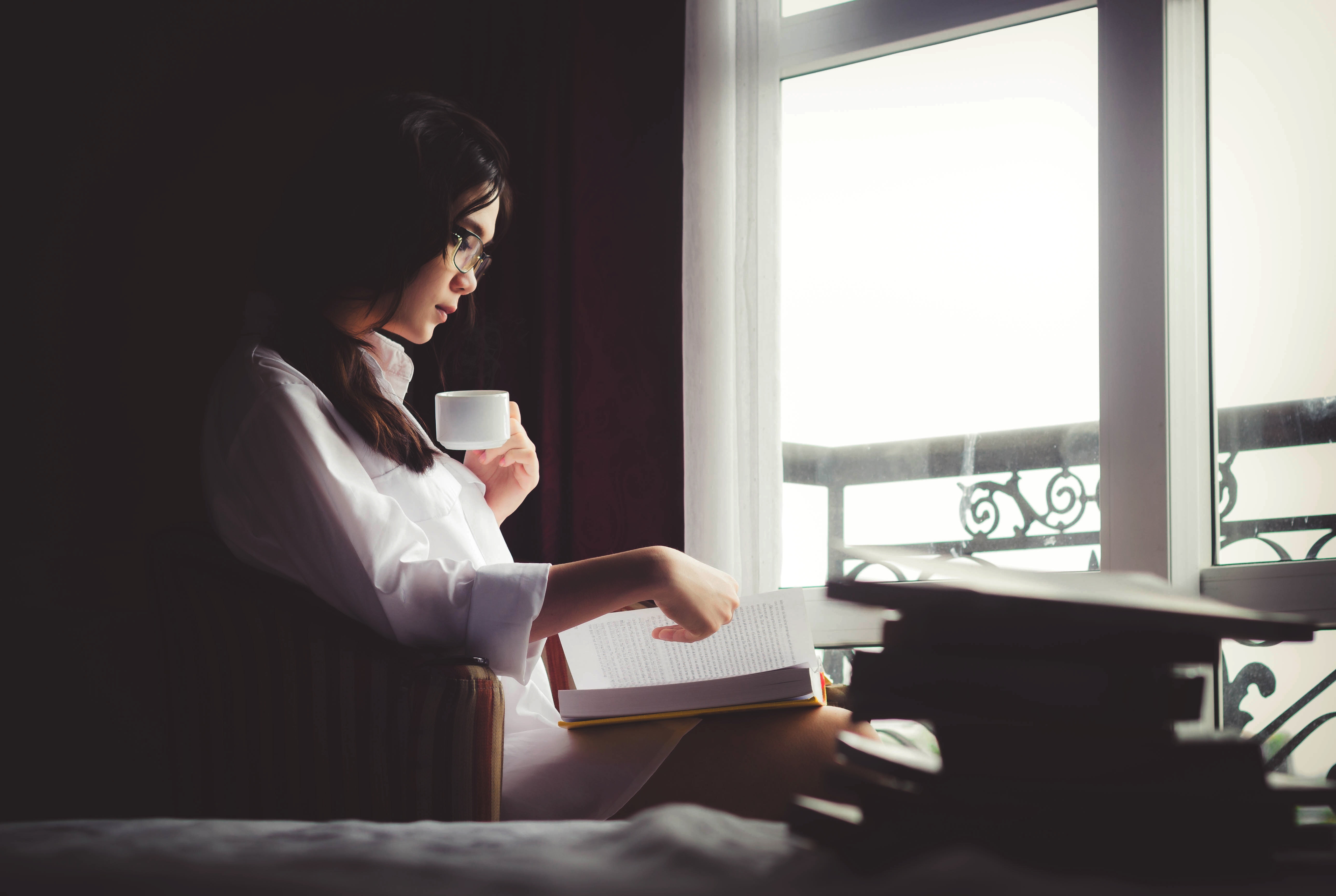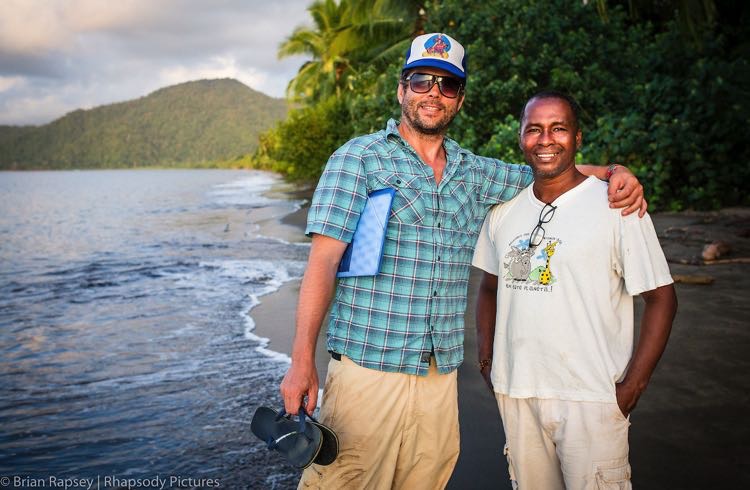The key to great storytelling is creating a connection with your viewer. Visual storyteller Gregg Bleakney from WhereNext explains you've got to think like Jason Bourne.
Shares
 Photo © Anthony Tran
Photo © Anthony Tran
- Understand your emotions
- Your feelings affect your subject's feelings
- Anticipate like a secret agent
Creating a connection between viewers and characters in a story is key to creating visual works that stand the test of time. When a viewer feels empathy and emotionally vibes with a character, they're more likely to let the video inspire them, change them, or execute a call to action.
That’s why the tagline for my production agency, WhereNext, is #feelsomething. It’s the baseline for everything we do.
If our stories don’t trigger some sort of emotional response from viewers – if they don’t make our audience think, cry or dream – then we start from scratch until we have something that moves people.
I don’t believe that there’s a definitive formula for this: it’s a unique and personal process between the creator and the subject.
There are, however, three moments in my life that have accidentally shaped my internal compass. I hope these will inspire you to create your own guide for channeling an extra dose of emotion into your work.
Understand your emotions
When I was 18, I had the good fortune of being offered a scholarship to join the University of Oregon’s track and field team. My specialty was the triple jump.
My high school coach, Peter Shmock, also competed for the University of Oregon and went to the 1976 Olympic Games in the shot put. His coach during those years was Bill Bowerman.
Among his athletes, Bill is remembered as one of the most innovative and inspiring coaches in the sport’s history. To the rest of the world, he’s known as the founder of the sporting goods empire, Nike.
During my senior year in college, Bill invited Pete and me to his ranch for a day of hanging out – three generations of athletes and coaches.
That day, I learned that if a coach wants to understand and motivate the emotional state of their athletes, they must first develop a keen self-awareness of their own emotional state.
This is the principle I now use to tap into the #feelsomething mechanics of storytelling. If a filmmaker wants to understand and anticipate the emotional state of their subjects, they should first be in touch with their own emotions.
I practice this self-awareness through visualization. I look for a nice quiet place to be alone, take some deep breaths, and begin to search through some powerful memories: my first time having sex, when I wet the bed at a slumber party, sitting alone at the lunch table when I moved to a new school, winning my first sports competition, the first time I saw a dead person, a romantic heartbreak... I find that when I practice feeling my own emotions, I become more aware of the emotions of the people in the world around me.
When I’m out in the world, directing or producing, having self-awareness of my own emotional highlights and lowlights allows me to better understand and capture my subjects’ emotional states.
Your feelings affect your subject's feelings
When I turned 30, I decided to trade my career in software for a life on the road. I spent two years cycling from Alaska to Argentina. The beauty of independent travel on a bicycle is that you meet loads of different kinds of people along the roadside, every day.
Each time you meet someone new, you’re effectively re-inventing who you are at that moment – quickly sizing up the other person, and adjusting your behavior to create the desired first impression. It’s a bit like being an actor.
Unlike my friends back home, the people I met on the road didn’t have a preconceived notion of who I was.
For example, when a Swiss tourist stopped to ask if I had a map, I was changing a flat tire on the side of the road in Alaska – flailing and cursing over being bitten by thousands of herculean mosquitos. He probably thought I was an asshole.
That mosquito-bitten vibe was very different to my random encounter with a cute, bohemian, French traveler on a beach in Nicaragua, after a day of rest, at sunset, with a beer in hand.
After thousands of roadside encounters from my bicycle seat, I started to refine how my emotional state could reflect on the person I had just met.
I use this with my storytelling today and always try to approach my subjects with the vibe that I think will allow them to most comfortably reflect their true emotional state on camera.
Travel is the best way I’ve found to practice this skill. Get out into the world – out of your “normal” zone – and have fun. Meet people. Play with changing your vibe when meeting different people in different situations, but keep it authentic.
Bookmark how the resulting behavior from fresh encounters can be applied to your work as a storyteller.
Anticipate like a secret agent
There’s a scene in the movie The Bourne Identity, where Jason Bourne struggles with his bout of amnesia. He’s just beginning to understand who he is: a secret agent.
Over lunch at a diner, he’s explaining his hunch about why he’s not a normal civilian to his friend Marie: “I can tell you the license plate numbers of all six cars outside. I can tell you that our waitress is left-handed, and the guy sitting up at the counter weighs 215 pounds and knows how to handle himself. I know the best place to look for a gun is the cab, or the gray truck outside, and at this altitude, I can run, flat out, for a half-mile before my hands start shaking.”
After finishing my cycling trip, I met Rich Clarkson, the former Director of Photography for National Geographic Magazine. He offered to mentor me as a visual storyteller. He sent me to National Geographic’s home office in Washington D.C. to talk with Susan Smith, one of the best – and toughest – photo editors in the business.
She asked me to prepare a set of images taken from my bicycle trip. I naively assembled my best sunset, landscape, and pretty pictures.
As soon as we sat down, she swiftly dismissed my photos as generic, postcard images. She pointed to a photo made by one of her favorite photographers, David Alan Harvey.
The image was a group of four French women, hanging out along the Seine in Paris. Two of them were taking a drag, while the other two kissed on the cheek in greeting. There was a Japanese tourist in the background, taking a photo.
“To make a photo like this, you have to be curious, observe the world around you, and anticipate that world,” Susan commented. It clicked.
In that moment, David Alan Harvey was like a secret agent. His photo wasn’t just beautiful: it told a story.
He was so tuned in to the world around him, he was able to anticipate the kiss, the drag of the cigarette, and the Japanese tourist, and he positions himself at a perfect angle – all before it happened.
I practice being a visual-storytelling secret agent by quietly observing the world around me from park benches, restaurants, etc. I try to pick up on patterns. Who goes where, when, and why? What is that person feeling? Why are they feeling that way?
When you’re out in the world making stories, it’s just as critical to be able to anticipate and position yourself to capture a #feelsomething moment as it is to recognize an emotional state in your subject.
Think like Jason Bourne to make it happen.
Want to be mentored by a professional filmmaker? Keep an eye out for our Travel Film Scholarship.
Or watch the Travel Documentary Masterclass for more exclusive advice.
Related articles
Simple and flexible travel insurance
You can buy at home or while traveling, and claim online from anywhere in the world. With 150+ adventure activities covered and 24/7 emergency assistance.
Get a quote
3 Comments
Who is the author here? Thank you for sharing whoever you are! Anticipate what will happen. At this point in time, I get completely absorbed in what I'm experiencing that I forget to take a photo. Or I only take photos when I remember I need a photo to go along with the story I'm writing. I thought I was observant, but this is next level.
What a great reflection, I totally agree that pictures that tell a story are super powerful. I hope we can put this into action in our outdoors project called www.gowheeltheworld.com
Excellent tip! we'll start practising this right away! Let's see what we catch today in the Acropolis of Athens with Paula for our blog www.wearenottourists.com